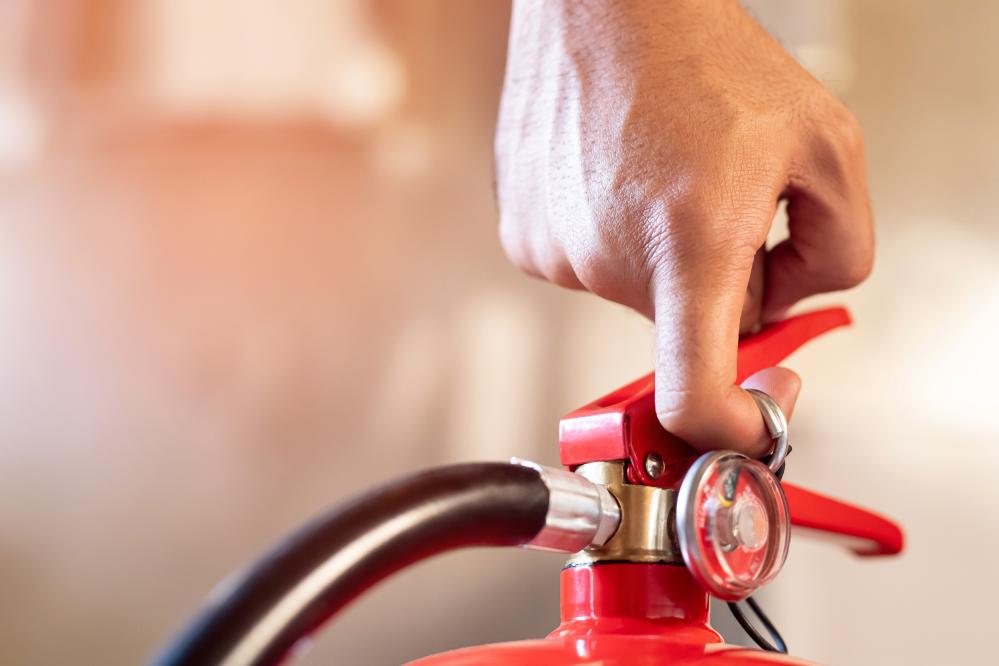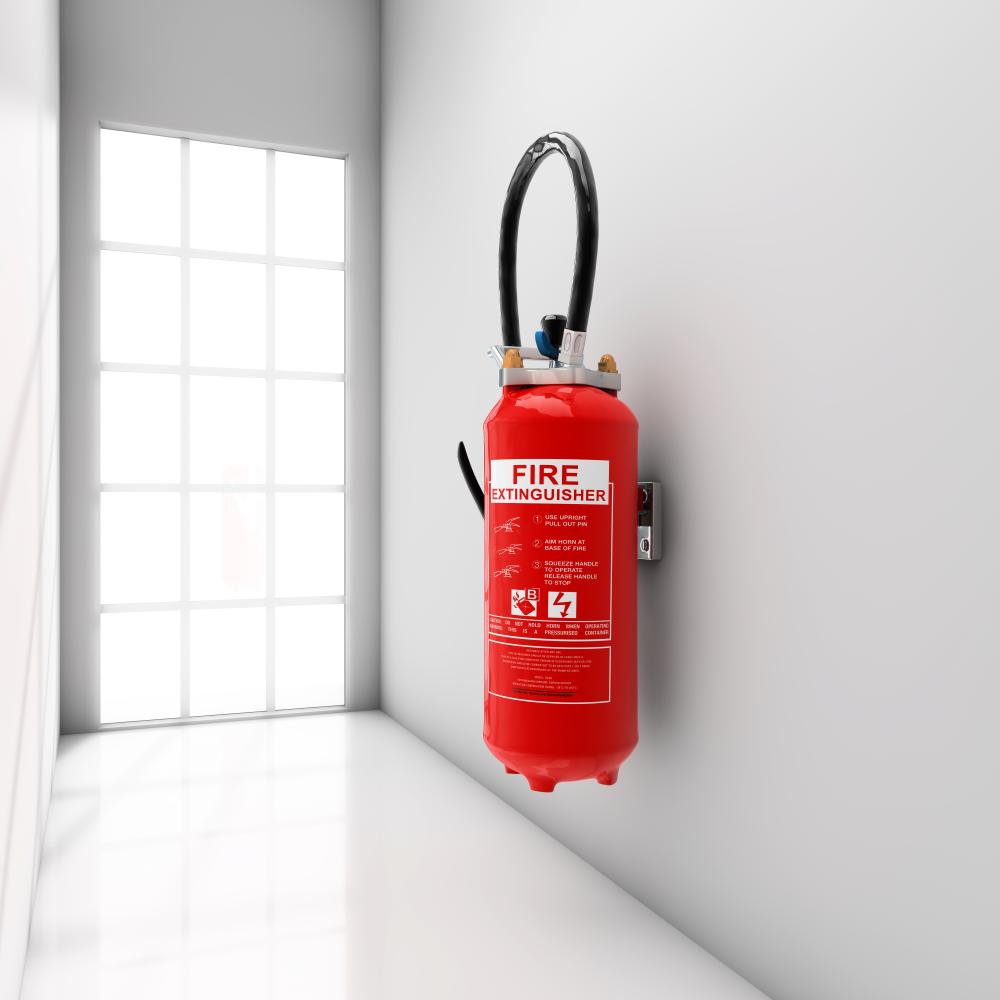The Importance of Fire Extinguisher Inspections
Having fire extinguishers available is essential for safety, but their presence alone isn’t enough. Regular inspections ensure that these vital tools function properly when needed. In my 20+ years in the fire safety industry, I’ve seen how regular fire extinguisher inspection queens can prevent potentially devastating situations. An unchecked extinguisher could fail during an emergency, turning a controllable blaze into a catastrophe.
Fire extinguisher inspection queens involves checking pressure gauges, assessing mechanical parts, and ensuring proper placement. These inspections aren’t merely procedural; they’re a critical part of maintaining a safe environment. Just as a car requires regular maintenance to run smoothly, so too do fire extinguishers need routine checks.
How Inspections Keep Us Safe
Fire extinguishers are often the first line of defense against small fires. Regular inspections ensure they’re ready at a moment’s notice. Over my career, I’ve encountered extinguishers that appeared fine but were completely dysfunctional due to expired chemicals or internal corrosion.
-
Ensuring the extinguisher is free from physical damage
-
Verifying that the pressure gauge is in the operable range
-
Checking that the operating instructions are visible and legible
-
Confirming the annual maintenance tag is present
Neglecting these steps can compromise an extinguisher’s reliability. For businesses, particularly in high-density areas like Queens, fire extinguisher inspection queens provides peace of mind by ensuring compliance with local safety codes.
Who Can Conduct Fire Extinguisher Inspections?
Qualified professionals should perform fire extinguisher inspections to ensure accuracy and compliance with safety standards. In Queens, certified technicians from companies like 1 Life Fire Safety conduct thorough inspections, guaranteeing alignment with local regulations. While monthly visual checks can be handled by anyone, comprehensive annual inspections require a pro’s touch.
These specialized technicians understand the nuances of different extinguisher types and their specific requirements. Their expertise ensures that inspections go beyond a mere formality, addressing potential issues that untrained eyes might overlook.
An emergency in fire extinguisher inspection queens arises when immediate safety risks are identified, such as an extinguished undercharged beyond safe levels or a faulty discharge mechanism. In such cases, professional assistance must be sought urgently to replace or repair the extinguishers before they’re needed.
Ignoring these emergencies can lead to severe consequences. For instance, during an unexpected electrical fire, a functional fire extinguisher can subdue the flames quickly, avoiding damage and potential injury. Regular inspections help to identify and mitigate these emergencies before they escalate.
Steps for Conducting a Fire Extinguisher Inspection
Conducting an effective fire extinguisher inspection involves several key steps. These steps ensure that every component of the extinguisher is functional and compliant with safety standards.
-
Visual Inspection: Check for any dents, leaks, or other physical damage to the extinguisher body.
-
Pressure Gauge Check: Ensure the gauge needle is within the operable range.
-
Weight Verification: Weigh the extinguisher to confirm it’s full and hasn’t leaked.
-
Inspection of Seals and Tamper Indicators: Make sure they are intact and unbroken.
-
Label and Tag Check: Verify the visibility and readability of operating instructions and maintenance tags.
These steps are more than a checklist; they’re a protocol for maintaining safety through fire extinguisher inspection queens. As autumn leaves crunch underfoot in Queens, so too should these inspections crunch down on safety risks.
Common Myths About Fire Extinguisher Inspections
In my extensive experience with fire safety, I’ve encountered several myths about inspections that can lead to dangerous misconceptions. One common myth is that visual checks every few months are sufficient. In truth, professional inspections are critical for uncovering issues not visible to the untrained eye. Another myth is that all extinguishers suit every fire type; each has its designated class depending on the potential fire source.
Misalignment with these facts can lead to improper extinguisher use, potentially increasing fire risks.
Why are regular fire extinguisher inspections crucial for businesses and residents in Queens?
Regular inspections are vital because they ensure your fire extinguishers are always ready to function when needed. Imagine going to extinguish a small fire and finding out your extinguisher is empty or has a faulty discharge. In our experience at 1 Life Fire Safety, we’ve seen how these inspections prevent what could be minor inconveniences from becoming major disasters. Businesses, in particular, benefit by avoiding fines and ensuring compliance with local fire codes. Would you like to know more about how these inspections can be customized for your specific needs?
What are some common misconceptions about fire extinguisher inspections?
A prevalent myth is that fire extinguishers only need visual checks once in a while to be deemed safe. However, our expertise at 1 Life Fire Safety shows that professional inspections are indispensable. We had a client who believed that a quick visual check was sufficient, only to find out during our inspection that the extinguisher’s internal pressure was too low. This highlights the importance of engaging professionals who understand the specifics. Could there be other myths you’re curious about?
How do inspections contribute to overall safety?
Inspections are more than just routine; they’re a critical component of safety strategies. For instance, an extinguisher that seems fine might have internal corrosion or expired chemicals, rendering it ineffective. With our comprehensive service, 1 Life Fire Safety ensures that everything is checked from pressure gauges to mechanical parts, keeping your property safe and compliant. Have you considered the peace of mind that comes with knowing your equipment is in top shape?
Who is qualified to conduct fire extinguisher inspections?
Only certified technicians, like the team at 1 Life Fire Safety, should perform comprehensive fire extinguisher inspections. Monthly visual checks can be done by non-professionals, but the detailed annual inspections need our expert touch to ensure thoroughness and accuracy. Our technicians are trained to spot issues that may not be visible to the untrained eye. Are you aware of the rigorous standards we follow to maintain our certification?
What constitutes an emergency in fire extinguisher inspection?
An emergency arises when a fire extinguisher is found to be severely undercharged or if there’s a mechanical fault that compromises its function. For example, if you discover an extinguisher with a compromised discharge mechanism, it’s crucial to get professional help immediately. At 1 Life Fire Safety, we ensure rapid response to such situations, preventing potential disasters. Have you ever wondered how quickly a faulty extinguisher can escalate a situation?
What are the steps involved in conducting a proper fire extinguisher inspection?
The inspection process involves several key steps, such as checking for physical damage, verifying the pressure and weight, and ensuring that labels and tags are legible. Each step offers critical insights into the extinguisher’s readiness. Our team at 1 Life Fire Safety takes you through each step with the precision that comes with years of expertise. Would a walkthrough of these steps help clarify any concerns you might have?
How does fire extinguisher inspection ensure compliance with safety regulations?
Compliance is a key reason why regular inspections are non-negotiable. In areas like Queens, failing to comply with local fire safety codes can result in hefty fines and increased risks. Our inspection services at 1 Life Fire Safety ensure that you meet all regulatory requirements, offering not only safety but also peace of mind. Are there specific compliance concerns you’d like us to address?
Can you provide expert insights on choosing the right fire extinguisher for different fire types?
Choosing the right extinguisher is crucial and not all extinguishers are created equal. We often recommend starting with understanding the types of fires common in your environment. For instance, kitchens often require extinguishers designed to handle grease fires. At 1 Life Fire Safety, we help you choose the right equipment tailored to your specific needs, ensuring maximum safety. Would you like advice on matching extinguishers to specific environments in your property?
Why should professional fire extinguisher inspections be prioritized over self-checks?
While self-checks can identify visible issues, they often miss the hidden problems only a professional can detect. We at 1 Life Fire Safety emphasize the need for expert evaluations that cover all aspects, including internal pressure checks and mechanical functionality. This ensures that extinguishers are not just visibly fine but genuinely ready to use. Is there anything specific you’d like to know about our inspection process?
How can property managers ensure fire safety in multifamily buildings?
Fire safety in multifamily buildings requires a comprehensive approach, including regular extinguisher inspections, training for occupants, and updated safety plans. Our experience at 1 Life Fire Safety helps property managers implement and maintain robust safety protocols, providing necessary training and upgrades as needed. Interested in learning more about how we can tailor our services to fit your building’s needs?

